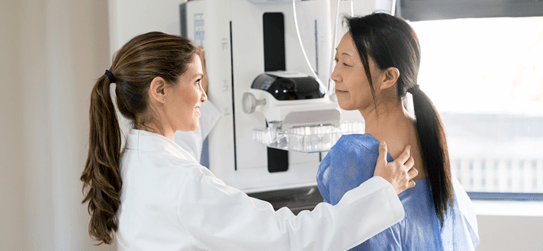As we look to further champion world-leading outcomes in cancer prevention, treatment and support, it is crucial that reliable surveillance information remain available, so we can identify where more resources are needed.
Working in collaboration with Statistics Canada and the Public Health Agency of Canada, a new study outlines the 2022 projected estimates of cancer in Canada. These new findings, such as an expected rise in new cancer cases since last year, suggests that the Canadian Cancer Society’s national support system remains as important as ever.
Find out what the key takeaways reveal and what programs we have in place if you have been impacted by cancer.
1. An estimated 233,900 Canadians are expected to be diagnosed with cancer in 2022, with 85,100 deaths
In 2022, 233,900 Canadians are estimated to hear the words “you have cancer,” compared to the 229,200 new cancer cases in 2021 — an increase that is likely the result of Canada’s growing and aging population. Cancer deaths are also expected to rise this year, from 84,600 in 2021 to 85,100 in 2022.
As we continue to fund programs like Wheels of Hope, information specialists and educational resources for those at risk of cancer and their caregivers, we want to ensure them of our commitment to guide them on their journeys while funding new groundbreaking cancer research initiatives.

2. Lung cancer will remain the leading cause of cancer
In 2022, it is estimated that 30,000 people will be diagnosed with lung cancer. Lung cancer is estimated to account for 24.3% of all cancer deaths, which is more than colorectal, pancreatic and breast cancer deaths combined.
We expect to see an increase in lung cancer among females, suggesting measures to reduce tobacco consumption among younger populations and women remain ever important. Investing in early detection and treatments as well as advocating to government for increased tobacco controls also remain a priority.
We hope all of our continued efforts will assist other priority populations where smoking continues to be high, such as lower income families, people living in rural communities and First Nation populations.
And if you are looking to start your journey into quitting smoking, our free Smoker’s Helpline is available for anyone who needs support or assistance in creating a personalized plan to help quit.

3. The gap between pancreatic cancer deaths and overall cases suggests more early detection measures are needed
Pancreatic cancer is expected be the third leading cause of cancer deaths, despite it being the 11th commonly diagnosed cancer.
Since the 1990’s, the number of deaths for other cancers have steadily declined, like lung cancer and hematologic cancers. However, because pancreatic cancer is located deep in the abdomen, more than 60% of cases are diagnosed at a late stage. With no early screening tests available and limited progress in developing new early detection and treatment measures, more research and clinical trials will need to be invested in.
Through our new funding opportunity, the CCS Breakthrough Team Grants: Transforming Low Survival Cancers, we hope to bring together the sharpest minds across Canada with scientific and clinical expertise, to improve the lives of people impacted by pancreatic, esophagus, brain, lung, liver and stomach cancer.

4. Cancer cases will continue to be the highest in eastern Canada
Newfoundland and Labrador, PEI, Nova Scotia, and Nunavut are expected to have the highest cancer death rates in 2022, whereas western regions, Yukon, British Columbia and Alberta, will likely have the lowest.
To give further assistance to the rural and aging populations of eastern Canada, we are committed to enhancing and sustaining programs unique to the region through our Atlantic Campaign. Our growing network of researchers whose work is funded through the Atlantic Campaign includes Dr Rodney Ouellette, the scientific director of the Atlantic Cancer Research Institute. He is hopeful his research into the effects of immunotherapy drugs on lung cancer tumours can lead to even more personalized treatments. We look forward to more advancements and discoveries by our Atlantic researchers in the year to come!
The Lodge That Gives in Halifax and Daffodil Place in St. John’s also remain open for anyone in need of a home away from home when they are receiving treatment. And regardless of where you are in Canada, please visit CancerConnection.ca, if you need any additional emotional support.

5. Breast cancer is expected to be the most common cancer diagnosed among women
In 2022, 28,600 people are expected to be diagnosed with breast cancer — accounting for 1 in 4 new cases in females.
Since the mid-1980’s, the breast cancer death rate has declined by 49%, as a result of organized screening programs and improvements in treatment. However, there is still more work to be done.
Breast cancer is projected to be the second leading cause of cancer deaths, with 5,500 cancer deaths expected in 2022. Through the CIBC Run for the Cure, we will continue rallying our passionate communities to help us shape health policies and fund new expansions to our national support system.

6. Prostate cancer is expected to be the most commonly diagnosed cancer among men
Prostate cancer is projected to represent 1 in 5 new cases of cancer among males, with 24,600 new cases expected to be diagnosed in 2022.
Through more investments in research, life-saving treatments and our nationwide support system, prostate cancer deaths have declined by 50% since its’ peak in 1995. People who have been diagnosed with prostate cancer, like Charlie, now more than ever can continue living their lives to the fullest.
We are incredibly grateful to the donors and researchers who have made this progress possible and continue to fund new treatment options.
Visit our resources to understand your risks of prostate cancer and find which test is right for you.

As nearly half of all Canadians are expected the hear the words “you have cancer” at some point in their lifetime, we all know someone who could benefit from learning about their risks of cancer and finding which of our testing and support programs are right for them.
Please read the full study, or view the downloadable one-page infographic.
